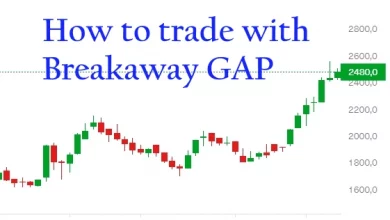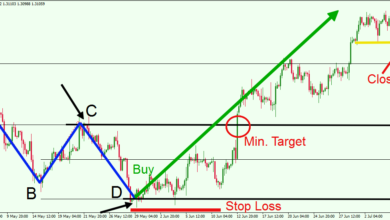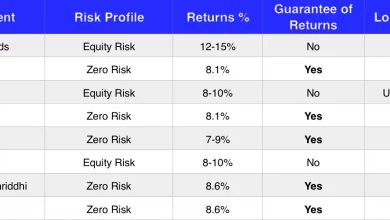UNDERSTANDING POSITION TRADING

WHAT IS POSITION TRADING?
Position trading is one of the frequently used trading techniques in which a person keeps a position in securities for an extended length of time, usually months or years. Short-term market changes are ignored by position traders in favor of identifying and benefitting from longer-term trends.
Position trading meaning? It’s the kind of trading that’s most similar to investing, with the key distinction being that buy-and-hold investors are only allowed to go long.
It’s also the most time-consuming of all the trading methods. As a result, there is a bigger possibility for profit – but also a higher inherent risk.
Position trading has several advantages, including reduced position maintenance, the ability to reduce market “noise”, and the ability to capitalize on larger trends.
Table of contents
- WHAT IS POSITION TRADING?
- POSITIONAL TRADING STRATEGIES
- POSITIONAL TRADING STRATEGIES THAT ARE COMMONLY USED.
- SOME IMPORTANT POSITIONAL TRADING INDICATORS USED BY TRADERS
- WHAT ARE THE MOST COMMON INSTRUMENTS TRADES BY POSITION TRADERS?
- DAY TRADING VS. POSITION TRADING
- INVESTING VS. POSITION TRADING
- SWING TRADING VS. POSITION TRADING
- ADVANTAGES OF POSITION TRADING.
- DISADVANTAGES OF POSITION TRADING
- IN CONCLUSION
POSITIONAL TRADING STRATEGIES
Position trading is one of the long-term trading strategies. And, position traders occupy a middle ground between long-term investors and day traders They wait in the trading market for a long time, often weeks or even months, before closing their position or open trade in order to make a bigger profit. So, if you believe position trading is your preferred trading style, you’ll need to brush up on the most prevalent position trading methods.
What are the benefits of using a positional trading strategy?
Position traders stay in the market for a longer duration, which leads to higher profits but also raises the trader’s intrinsic risk. If the trend changes throughout the term, you may find yourself on the wrong side of the market. You’ll be able to see developing patterns and plan your entry and departure with greater precision if you have a good strategy in place.
Although position traders use both fundamental and technical trading approaches to make their trading judgments, technical analysis is the most important element of their strategy. When you analyze a chart, you’re looking at how the general public feels about a certain asset, which may help you plan successful transactions.
Position traders are uninvolved in the trading process. They are not hooked to the computer the whole day, unlike the day traders, this makes it more important for position traders to comprehend market trends, analyze patterns, and study indicators to spot any deflections in the present trend.
POSITIONAL TRADING STRATEGIES THAT ARE COMMONLY USED.
Positional trading methods let traders focus on the broad picture by removing short-term market distractions. Positional traders overlook tiny trend shifts, necessitating tactics built on a solid basis of logic and research.
Let’s have a look at the list below for the best positional trading strategy:
The Trading breakouts strategy
Position traders might benefit from trading breakouts since they can herald the commencement of the next significant market shift. Traders that use this strategy are seeking to enter a trade during the early phases of a trend.
When an asset’s price goes outside of specified support or resistance levels with higher price volume, it is called a breakout. The goal of breakout trading is to open a long trading position when an asset’s price breaks above the resistance level or a short trading position (short term positional trading level) once it breaks below support. The cornerstone for trading large-scale price moves in securities is generally a breakout approach. To trade breakouts successfully, you must be confident in your ability to detect times of resistance and support.
The Support and Resistance Strategy.
Traders can visualize the range in which a price of an asset is changing by using support and resistance lines. Support establishes a lower price boundary, while resistance establishes a higher price boundary.
Here’s how to figure out where a price of an asset will find resistance and support.
– Market historical information is a good way to figure out the asset’s support and resistance levels Periods of big gains and losses are used by traders as indications for future market changes.
-The Fibonacci Retracement is one of the helpful technical analysis tools for determining dynamic resistance and support position.
– Whenever a breakout occurs, the roles of support and resistance shift. Traders utilize past support and resistance levels to determine how the price of an asset has changed
Range Trading Strategy
Most traders employ a range trading technique whenever the price swings in a predictable pattern of highs and lows with no discernible trend. Price range strategies are used by traders to detect overbought and oversold trading assets to purchase and sell.
The 50-days and 200-days EMA Crossover Strategy
50-days and 200-days are two different lengths of time. The finest moving averages for any positional trading are the exponential moving averages (EMAs). Once the moving average lines cross, traders started seeking trading chances.
The so-called golden cross occurs when the fast-moving average trading co line crosses the slow-moving average trading line from below the point of crossing. It suggests that the market will continue to rise.
When the 50-day moving average crosses the 200-day moving average from above, it implies a bear market. Death Cross is the name given to the junction location.
MAs, on the other hand, are trailing indicators, which means that by the time the crossing occurs, the trend has already reversed. Traders use a combination of stochastic RSI and MA lines to address this issue.
Calculating RSI by using stochastic formula is referred to as stochastic RSI. To solve crossover faults, traders mix the two, stochastic RSI and moving average lines, on their trading charts. Before the MA crossing, a stochastic RSI will offer an early indicator of the creation of a golden cross…
When the stochastic RSI crosses above the 20-level, it signals the start of a bullish trend. Before reacting to the signal, it must first be confirmed.
Wait for the price to break and close right above the 200-day EMA to validate the market trend. In positional trading, the 200-day EMA is among the most powerful MAs, and a price closing above it is considered a good and sufficient signal to act on. The stop-loss in a trade utilizing this method is set immediately underneath the current downswing.
The Pullback and Retracement Strategy
Pullbacks represent brief periods of market reconciliation that occur during an upward movement of a market. To plan a good plan entry, traders watch for pullbacks in their trading plans. Buying low and selling high is the strategy. Traders join the market whenever the asset’s price dips during a downturn. They must now remove the possibility of a trend reversal when the downturn occurs. Fibonacci Retracement is used for this.
Position traders can use the Fibonacci Retracement to determine when to start or stop a position. On the market price chart, they would construct Fibonacci Retracement lines at 23.6, 61.8, and 38.2 %. These lines are used by positional traders to determine support and resistance levels as well as any possible potential trades.
SOME IMPORTANT POSITIONAL TRADING INDICATORS USED BY TRADERS
The types of indicators that perform well for trend following are often the same as those that work perfectly for position trading. it’s critical to be able to tell if the historical trend that will enable you to achieve your profit goal is on your side or has gone against you during position trading. Accurate market timing is less critical in position trading techniques (but highly crucial in day trading techniques).
Below are the top three trading best indicators for positional trading:
1) Support and Resistance Indicator
Historical price data of highs and lows, as well as help traders in determining the market trends and forecast when and where to enter a trade or close a position.
2) 50, 100, and 200 days Simple Moving Averages (SMAs)
Simple moving averages (SMAs) are a lagging trading indicator, which means that the price moves first, followed by the moving average, resulting in a trading signal. A moving average crossover may be used as an entry or exit signal for position traders, or the asset’s price is above or below the moving average can be used as a cause to be either in or out of any trading position.
3) Moving Average Convergence Diver (MACD)
For traders that like maintaining a clean bar or candlestick charts (known as naked trading! ). MACD crossings can be used to identify when it’s time to enter or leave a transaction. And it’s also liked a substitute for moving averages.
WHAT ARE THE MOST COMMON INSTRUMENTS TRADES BY POSITION TRADERS?
Position trading is said to be the trading technique that most closely resembles investing. Position traders are interested in long-term market movements and, as a result, they focused more on markets with obvious trends than markets with a lot of volatility around it. And they mostly trade within a narrow price range.
Forex (FX)
Forex traders, on the whole, prefer shorter periods, such as more aggressive swing trading or day trading. The overnight swap cost that FX traders are a charge for holding stock in New York still past 5 p.m. is one of the reasons for this. Also, it might be because forex markets are highly busy, with trading possibilities available 24 hours a day, and they are continuously reacting to the economic data and world happenings. This increased volatility is conducive to short-term market trading. All of this being said, foreign exchange markets are susceptible to a more significant medium-term trend, thus position trading possibilities are numerous.
Shares
Position traders exchange company shares on a regular basis. When opposed to extremely volatile markets such as the Forex market and cryptocurrencies, financial asset classes such as shares are subjected to more steady patterns. Regardless of some occurrences, like market releases and larger relevant news, fundamental research of a company’s core business model and accounts provides a strong foundation on which position traders may assess a company’s worth and, as a result, identify possibilities. They may make predictions about where particular companies will be in a year’s time.
Commodity
If compared to other financial markets, like some certain currency pairings and cryptocurrencies, commodities, like stocks, are susceptible to longer-term trends than those markets. Nevertheless, this isn’t to suggest that commodities aren’t prone to price fluctuations. Commodities are also sometimes volatile but they tend to settle in very close ranges and stabilize real quick in comparison to other markets. Because hard commodities are mined and hence controlled by mining corporations, their supply tends to be very constant. However, they are more vulnerable to demand shocks since supply is generally steady.
Indices
Indices are made up of a lot of different firms that aren’t always connected. They’re usually from the same geographical location, whether it’s a country, a trade organization, or a continent. As a result, indexes typically exhibit strong patterns and are preferred by position traders. The FTSE 250, for example, is a strong indication of the United Kingdom’s economic health since it is generally unaffected by short-term declines in a single industry.
Indices trading, in addition to position trading, gives clearer market trends along with reduced noise.
Cryptocurrency
Despite their high volatility, cryptocurrency draws the interest of many position traders who use buy and hold strategies for specific coins value that they believe to appreciate significantly. Position traders like these are likely motivated by individuals who profited from the bitcoin boom by exiting before it broke. Because cryptocurrency markets are extremely volatile, people that use buy-and-hold strategies are doing so basically at their own risk.
DAY TRADING VS. POSITION TRADING
Day trading is a trading method used by traders in which trades are opened and closed on the same trading day. For instance,
you purchase stock around 10 am right after a major catalyst, then you sell it around 3 pm when the stock value is already up by five percent or ten percent (potentially more in a hot market).
Day trading is categorized to be a high-stress activity. You must be present to see the activity. It is not suitable for all traders. The turbulence may be an emotional roller-coaster. This technique needs the proper attitude. And ready to keep an eye on the market while you’re there.
INVESTING VS. POSITION TRADING
To the untrained eye, investing appears to be quite similar to position trading. Both entail investing in a stock for a lengthy time in the hopes of making some cool return.
Investors, on the other hand, prefer to own a stock for a long time, collecting both a dividend and a capital gain as the stock price grows. Several investors are unconcerned with stock price weekly fluctuations.
Position traders are more concerned about stock price action and use a stop-loss to safeguard themselves if the stock swings against them during the trades.
In addition, position traders depend on market technical analysis more than an average investor, who depend more on company fundamentals analysis.
SWING TRADING VS. POSITION TRADING
Swing trading is the process of purchasing and selling stocks over a period of days to weeks.
The majority of swing trading methods and approaches are identical to those used in position trading, with traders employing the very same trading indicators and market chart patterns for entry and exit.
Swing trading has the advantage of allowing you to uncover more possible trade setups throughout the year. Unlike position trading, your money will not be locked up in other equities for an extended length of time.
Swing trading has a disadvantage… You should monitor your stocks more frequently, either daily or intraday.
ADVANTAGES OF POSITION TRADING.
- Maintenance is minimal.
- Trend capitalization is a term that refers to the process of
- Insusceptible to market swings in a short period of time.
- There will be no early trade exits.
- There will be less tension.
- Reduce the amount of “noise.”
DISADVANTAGES OF POSITION TRADING
- Liquidity of the account.
- There is a lack of compounding.
- Capital Requirements at Maximum Levels
IN CONCLUSION
As with everything else in the financial industry, the state of every company strategy is subject to change. Many people see the opportunity to make large sums of money by catching a hot trend, while others see the risk of macroeconomic catastrophe.
It is up to them to plan how to make a profit in the market no matter the market situation. While position trading may be ideal for some investors, it may be inconvenient for others. Every prospective trader or investor is responsible for selecting the most effective trading technique that works best for them. If you have the right amount of money time, personality, and money, a status business approach might be excellent.
However, if you don’t have time to observe market chats all day or looking for a less stressful approach to trading, then position trading might be a good option.
This trading strategy, if implemented correctly, may allow you to benefit from stock price movements that last for weeks or months.
You don’t have to follow the fast-paced world of day trading. There are several techniques available. It’s up to you as a trader or an investor to figure out what trading technique suits your lifestyle, availability, and portfolio the best. However, if you’re just starting out with position trading, it’s advisable to get some position trading books (this will help you with some proven positional trading tips) to study and attend some in-depth training classes to skill up before even started thinking of investing your hard-earn money.




